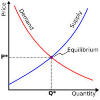NoirFan
Member
- Joined
- Jul 25, 2006
- Messages
- 671
So I’m just getting into single action revolvers, and I am astounded at the low prices on Western style repros. Looking around at Cabela’s I see new-made repros of guns like the 1858, SAA, and the Walker for $250-400 and I can’t understand how these are so cheap. I’ve always heard that a big part of the cost of guns like S&W and Colt DAs and high-end 1911s were due to the need for hand fitting and / or intricate lockwork, as compared to simpler modern designs. But I can’t imagine the old West designs are any less reliant on hand-fit and -finish than say, a Colt Python. They are also made in Italy so it’s not like they’re taking advantage of cheap labor in developing countries.
Is it because BP guns don’t need as much heat treatment? Or maybe because there are special taxes and licensing involved with making cartridge guns? Probably both, but there must be more to the story. Am I missing something?
Is it because BP guns don’t need as much heat treatment? Or maybe because there are special taxes and licensing involved with making cartridge guns? Probably both, but there must be more to the story. Am I missing something?


